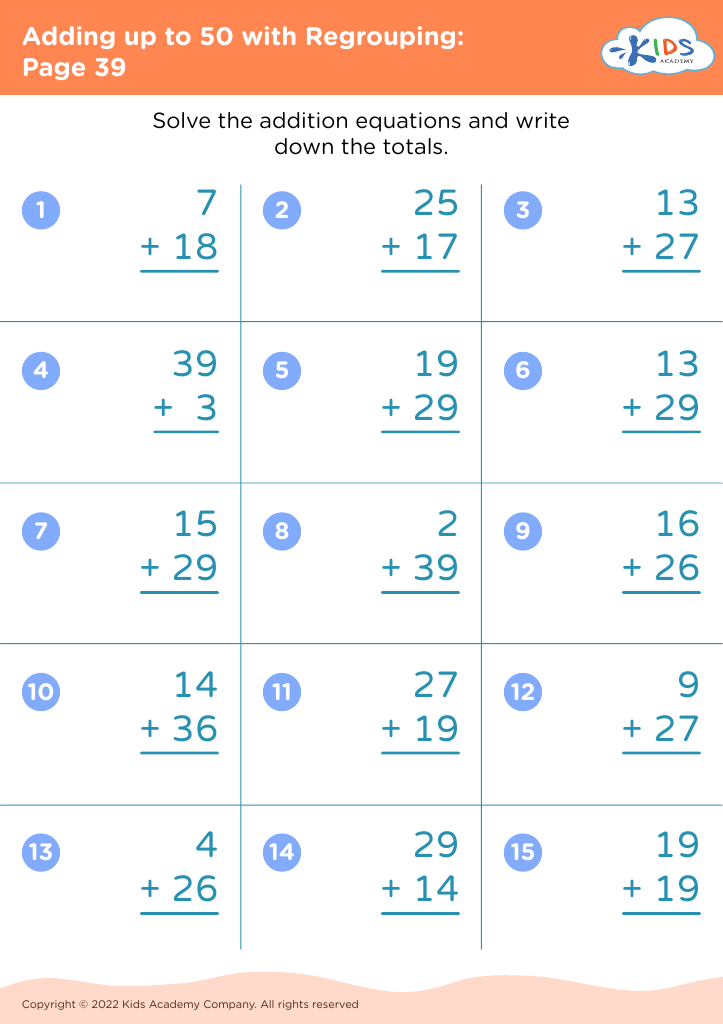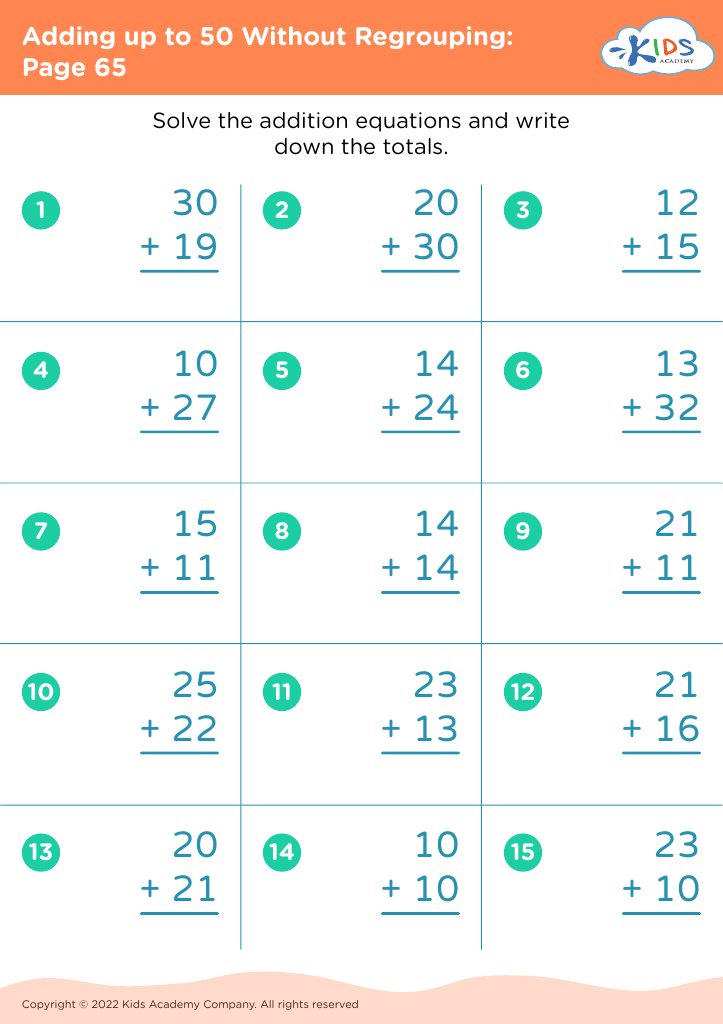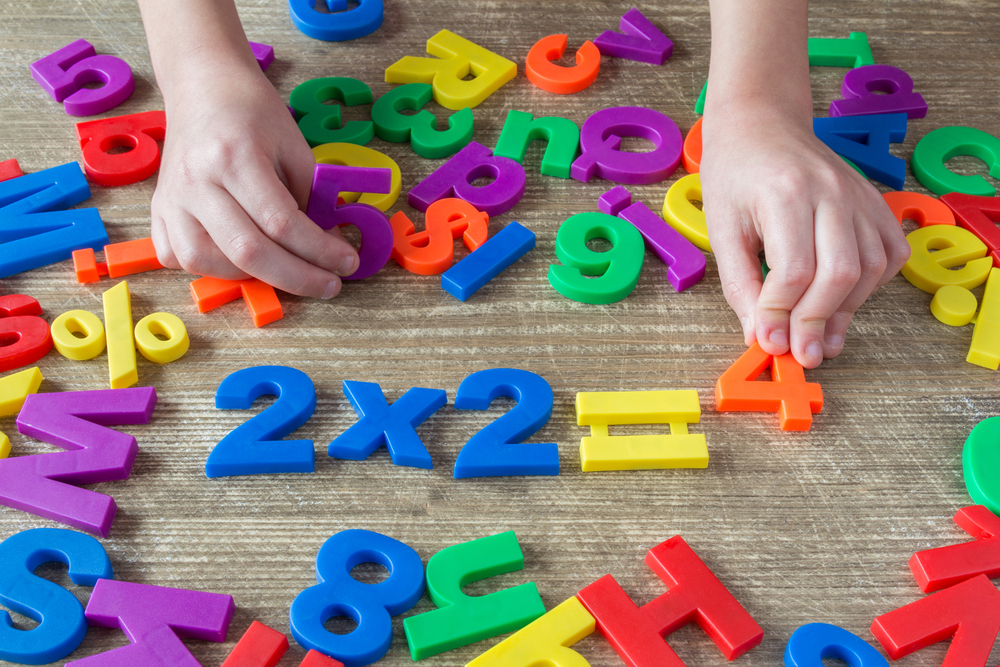Compare fractions Addition Worksheets for Ages 4-9
6 filtered results
-
From - To
Explore our engaging Compare Fractions Addition Worksheets designed for children aged 4 to 9! These interactive resources help young learners understand the concept of fractions while mastering addition skills. With clear visuals and fun exercises, kids will compare different fractions, enhance their number sense, and boost their confidence in math. Ideal for both classroom and at-home learning, these worksheets cater to various learning styles, making math enjoyable and accessible. Perfect for early grade teachers and parents seeking to support their child's math journey, our worksheets align with educational guidelines and foster critical thinking skills. Start your child’s math adventure today!
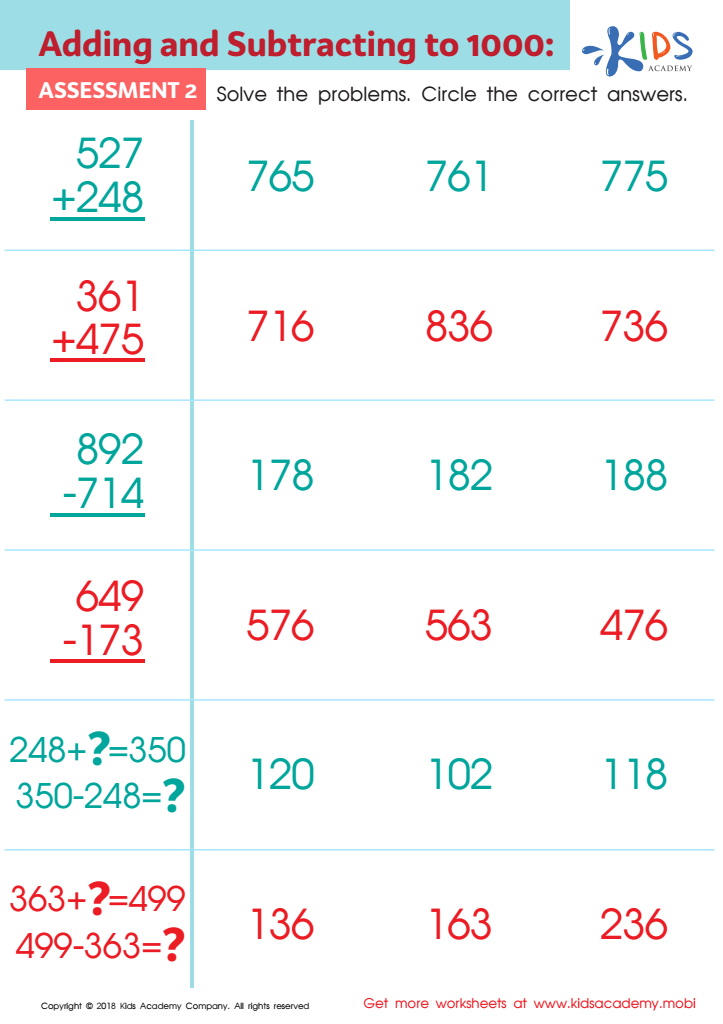

Adding and Subtracting to 1 Worksheet: Assessment 2
Parents and teachers should prioritize teaching children about comparing fractions and addition, as these foundational math skills have long-term implications for academic success. Understanding fractions helps children grasp key concepts in mathematics, such as division, ratios, and more complex number operations. At ages 4-9, children are in a critical developmental stage where they begin to make sense of numerical relationships. Introducing them to comparing fractions lays the groundwork for logical thinking and problem-solving abilities.
By embedding fraction comparison into fun activities—like slicing pizzas or sharing candies—parents can create engaging, real-world contexts that make the concept relatable. This hands-on experience aids in developing spatial awareness and numerical intuition. Furthermore, addition involving fractions teaches students to recognize that numbers can be part of a whole and how those parts relate to one another.
Encouraging mastery of these concepts instills confidence in young learners, fostering a positive attitude towards math. Ultimately, a solid understanding of fractions and addition can enhance a child's ability to tackle more advanced mathematical topics down the line, ensuring a smoother transition into higher-level math in school. Parents and teachers play a critical role in nurturing these essential skills.
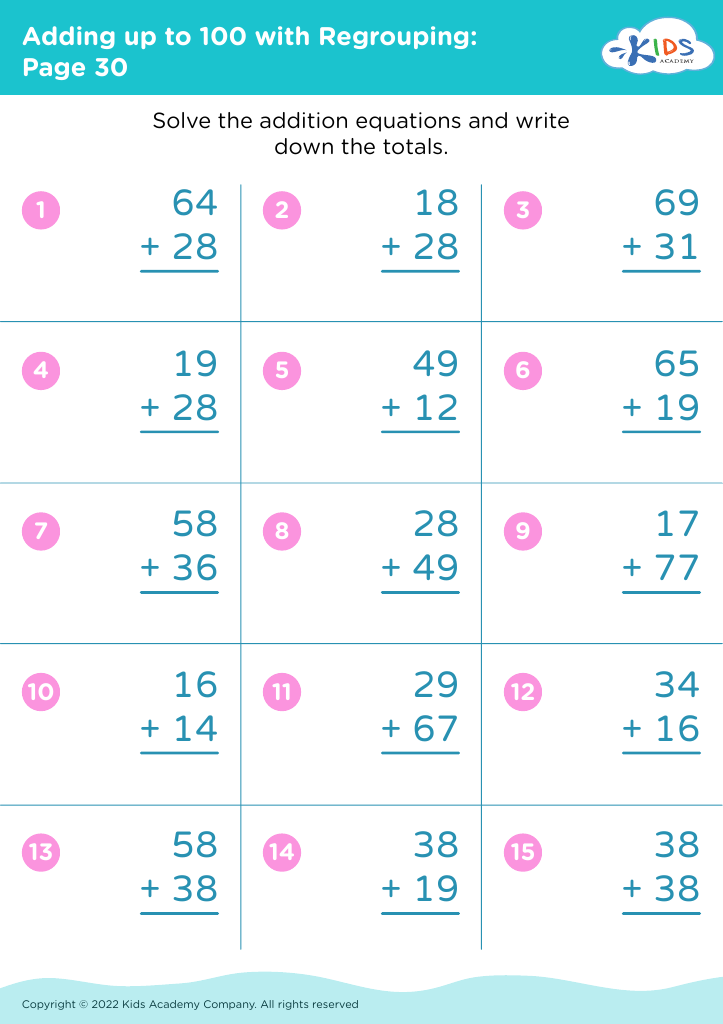

 Assign to My Students
Assign to My Students


